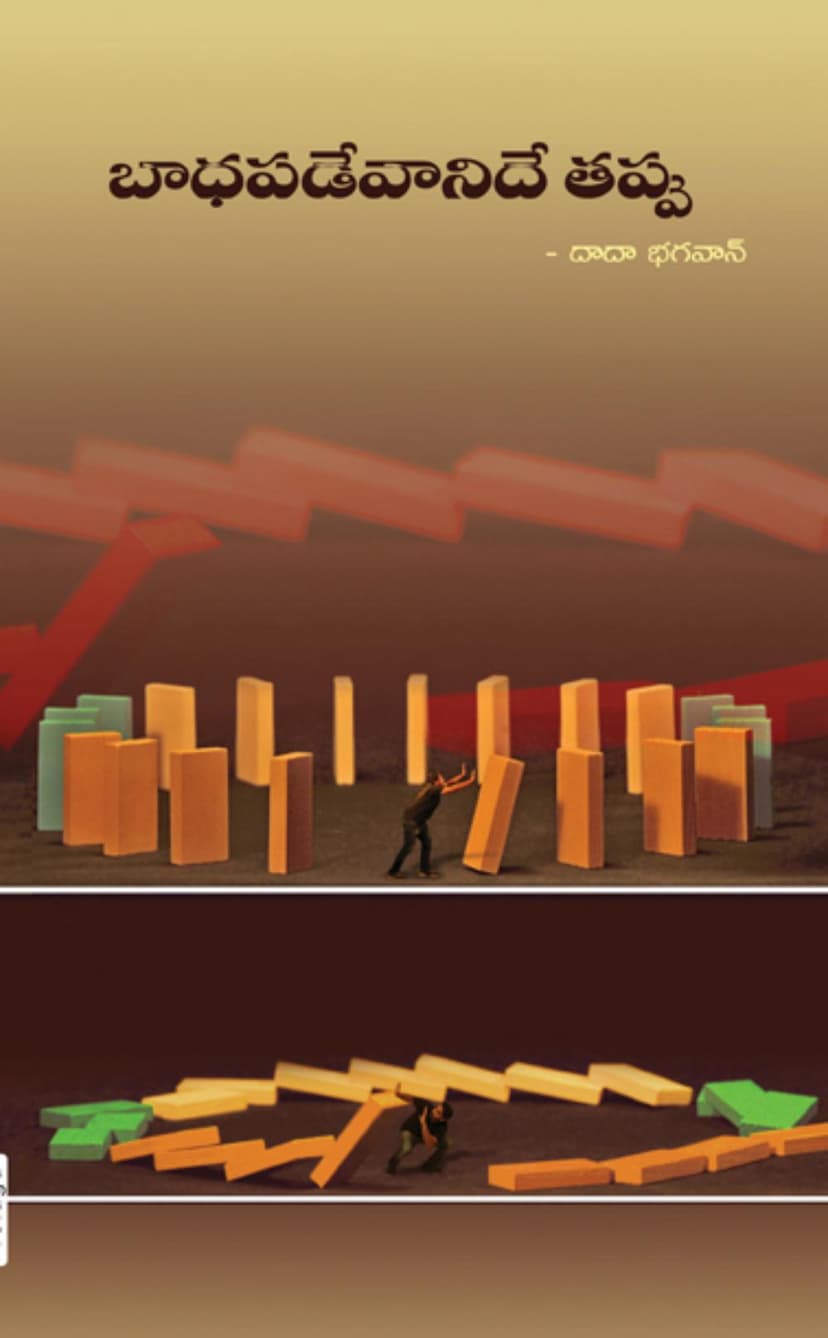Fault Is Of Sufferer
Added to library: September 1, 2025

Summary
Here's a comprehensive summary of the Jain text "Fault Is Of Sufferer" by Dada Bhagwan, based on the provided pages:
Book Title: Fault Is Of Sufferer Author: Dada Bhagwan Publisher: Dada Bhagwan Aradhana Trust
Core Philosophy: "The Fault Is Of The Sufferer"
The central and most profound message of this book is encapsulated in its title: "The Fault Is Of The Sufferer." Dada Bhagwan teaches that in the grand scheme of nature's justice, the person who experiences suffering is the one at fault. This isn't about blaming individuals in a worldly sense but understanding a deep spiritual principle governing karma and suffering.
Dada Bhagwan: The Enlightened Master
The book introduces Dada Bhagwan (also known as A.M. Patel) as a Gnani Purush (an enlightened being) who attained self-realization in 1958. He experienced a profound spiritual event that separated his ego from his actions, thoughts, and words. From that moment on, he became an instrument of the Divine, living as Dada Bhagwan, a manifestation of the Self, to guide humanity towards liberation. He emphasized that the "Dada Bhagwan" within him was also present, though perhaps unmanifested, in everyone. His teachings are described as "Akram Vignan" – a direct, shortcut path to self-realization, achievable in just a few hours through a process called "Gnan Vidhi."
Understanding Suffering and Karma:
- Nature's Unwavering Justice: The text asserts that nature operates on a single, unwavering law of justice: "The Fault Is Of The Sufferer." This law governs the entire universe. Worldly justice is often perceived as flawed or illusory, but nature's law is perfect and just, even if not immediately understood by humans.
- Suffering as a Result of Past Actions: Suffering is not random; it is the direct consequence of one's own past mistakes and karmas. When you suffer, it means your karmic accounts from past lives are being settled.
- The Role of the "Nimit" (Instrument): While external people or events may seem to cause suffering, they are merely instruments ("nimits"). The true fault lies with the sufferer, whose own past karma has brought these instruments into play. Blaming the instrument is misplaced; understanding the root cause within oneself is crucial.
- No External Fault: No one else in this world has the power to cause you suffering unless you have a karmic account with them. When someone harms you, it is your own past karma returning to you.
- The Illusion of Blame: In worldly disputes, people often assign blame to others to protect their own ego. This creates a cycle of blame and further suffering. The principle "The Fault Is Of The Sufferer" breaks this cycle by shifting the focus inward.
The Path to Liberation (Moksha):
- Self-Realization is Key: True liberation comes from Self-realization, the knowledge of the Self. This knowledge cannot be found in books but is directly received from an enlightened being.
- Knowledge vs. Tolerance: The book contrasts tolerance (sahan) with knowledge (gnan). While tolerance has limits, knowledge provides an infinite solution, leading to freedom from suffering without the need for endurance.
- Understanding Your Own Mistakes: The path to liberation involves recognizing your own faults. The primary fault is the mistaken belief "I am Chandulal" (or any given name), which is the root of all internal enemies like anger, pride, greed, and attachment. When this wrong belief is shed, the internal weaknesses disappear.
- Acceptance and Non-Attachment: To break the cycle of karma, one must accept whatever happens as a consequence of past accounts. This acceptance, when free from attachment and aversion, helps settle these accounts and prevents the creation of new ones.
- Living as a Witness: Be a "knower" and a "seer" of all that happens around you. Do not be affected by external events or the faults of others.
Practical Application:
- Daily Life: The principle "The Fault Is Of The Sufferer" is presented as a practical guide for daily life. Applying it can resolve all life's complexities.
- Identifying Faults: To identify your faults, observe the situations in life where you experience suffering. Those instances are indicators of your past mistakes.
- The Importance of Knowing: It's vital to realize that no one else is at fault. The only way to stop suffering is to stop creating new karmic ties by not faulting others.
- The "Nava Kalam" (Nine Noble Intentions): The book includes a section on "Nava Kalam," a set of nine profound intentions or prayers designed to cultivate purity of thought, speech, and action, free from causing harm to any living being. These are meant to be lived, not just recited.
Key Themes and Concepts:
- Karma: The law of cause and effect governing all actions and their consequences.
- Akram Vignan: The direct, shortcut path to self-realization.
- Gnani Purush: An enlightened being who has attained Self-realization.
- Self-Realization: The direct experience of the Soul (Self).
- Nimit: An instrument or catalyst through which karma manifests.
- The Ego: The false sense of self that causes suffering.
- Moksha: Liberation from the cycle of birth and death.
In essence, "The Fault Is Of The Sufferer" is a profound spiritual treatise that aims to liberate readers from suffering by revealing the internal source of all troubles and guiding them towards self-understanding and ultimately, liberation. It emphasizes that true justice lies in understanding one's own role in the creation of one's experiences.